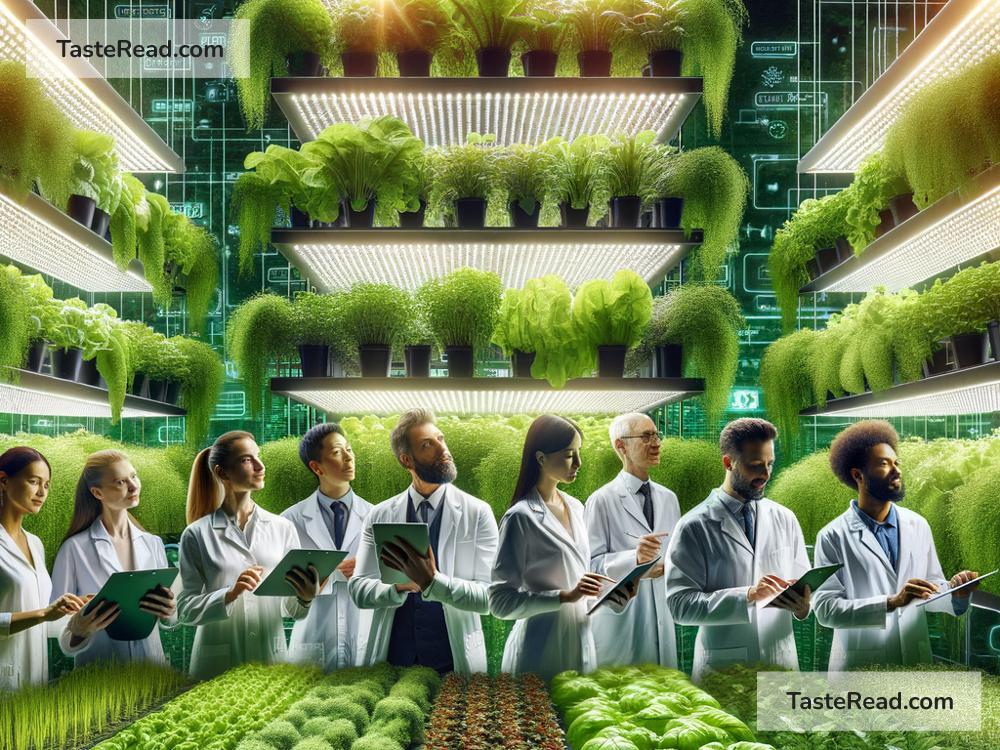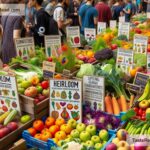The Future of Food and Global Collaboration: A Recipe for a Better Tomorrow
The food we eat today is the result of centuries of farming, trading, and inventing new ways to prepare meals. However, as our planet faces challenges like climate change, population growth, and resource shortages, the way we produce and consume food must evolve. The future of food depends not only on technology but also on how countries work together to create sustainable solutions. Let’s explore what the future food looks like and why global collaboration will play an important role in building a healthier, more sustainable food system.
The Challenges Facing Our Food System
The current global food system is under pressure. Climate change is affecting crops with unpredictable weather, such as floods, droughts, and rising temperatures. At the same time, the world’s population is growing quickly, and by 2050, there could be nearly 10 billion people on Earth. Feeding everyone will require much more food than we produce today.
In addition to quantity, the quality of food matters too. Many people suffer from malnutrition and don’t have enough healthy food to eat, while others face health problems like obesity because of diets high in processed and unhealthy food. Environmental issues like deforestation, overfishing, and excessive use of chemicals are also harming ecosystems and putting food production at risk.
Clearly, solving these problems will require bold ideas and cooperation between countries, scientists, farmers, businesses, and communities.
Innovations Shaping the Future of Food
The future of food is exciting because innovators around the world are developing new technologies and approaches to ensure there’s enough healthy and sustainable food for everyone. Here’s a sneak peek at what could shape the future of food:
-
Alternative Proteins: With the rising demand for meat, scientists are creating ways to produce protein without harming animals or the environment. Foods like lab-grown meat (made from animal cells) and plant-based meat substitutes (made from ingredients like soy, peas, and beans) are becoming popular. These alternatives use fewer resources like land and water and produce less pollution.
-
Vertical Farming: Instead of growing food on large pieces of land, vertical farming uses tall buildings and stacked layers to grow crops. This method uses less space, water, and pesticides while providing fresh produce year-round, even in areas where farming is challenging.
-
Precision Agriculture: Farmers can use drones, sensors, and AI technology to grow crops more efficiently. For example, they can monitor soil and weather conditions to know exactly how much water or fertilizer their crops need, reducing waste and improving yields.
-
Food Waste Reduction: A staggering amount of food goes to waste every year. Innovations like apps that connect restaurants with customers or technologies to keep food fresher for longer can help ensure that more food is eaten rather than thrown away.
-
Genetically Modified Crops: Scientists are developing crops that can resist pests, droughts, and extreme weather. These genetically modified plants can help farmers grow food even in tough conditions.
Why Global Collaboration Is Essential
While innovations are exciting, no single country can solve the world’s food challenges alone. Food production and consumption are deeply connected across borders. For example, crops like rice, corn, and wheat are grown in one part of the world and shipped to another. Fish caught off one coast may land in stores halfway around the globe. Climate-related issues in one farming region can ripple outward, affecting markets worldwide.
To create a better global food system, countries need to work together. Here are some ways global collaboration is essential:
-
Sharing Knowledge and Technology: Richer countries can help poorer countries access new farming methods and tools. Sharing innovations, like drought-resistant seeds or vertical farming techniques, can boost food security everywhere.
-
Preventing Food Waste: International agreements can help reduce food waste everywhere. For example, countries can work together to improve transportation, storage, and trade systems to make food last longer.
-
Creating Fair Trade Systems: Global collaboration can ensure farmers in developing countries get fair prices for their crops. Fair trade policies support small farmers and encourage sustainable farming practices.
-
Tackling Climate Change: Climate change affects us all, and working together to reduce greenhouse gases is essential. Countries can collaborate to promote green energy and environmentally friendly farming methods.
-
Emergency Support: When disasters like wars or floods disrupt food supplies, the international community can step in to provide aid and support.
What Can We Do as Individuals?
We all have a role to play in shaping the future of food! Here are some simple actions we can take:
- Reduce food waste by storing leftovers properly and only buying what we need.
- Try alternative proteins like plant-based foods to reduce the environmental impact of meat production.
- Support local farmers by buying fresh, seasonal produce.
- Learn about and advocate for policies that promote fair trade and sustainable farming.
Conclusion
The future of food is full of possibilities. Scientists and innovators are creating technologies that can revolutionize the way we grow, distribute, and consume food. But technology alone isn’t enough. Countries, organizations, and individuals need to work together to create a food system that is fair, sustainable, and capable of feeding everyone.
Global collaboration is the secret ingredient for solving the world’s food challenges. By sharing knowledge, resources, and innovative solutions, we can create a future where everyone has access to healthy and sustainable food. Together, we can ensure that the food system serves not just our current population, but future generations as well. After all, food isn’t just fuel for our bodies—it’s a source of connection, culture, and community. Let’s make the future of food a recipe for a better tomorrow!


